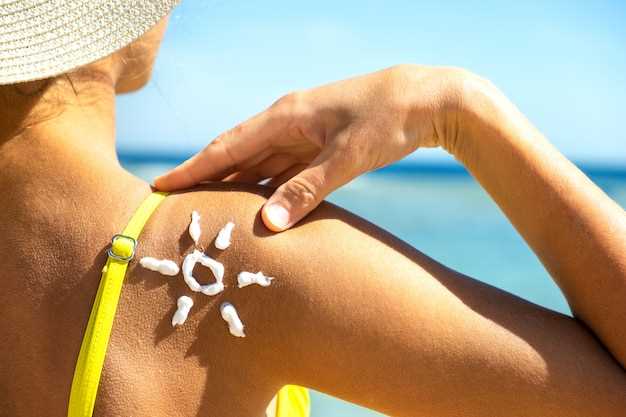
Suffering from sun rash caused by Losartan? Don’t worry, we have the solution for you! Our specially formulated cream will help soothe and alleviate the discomfort of Losartan sun rash. With its gentle ingredients and fast-acting relief, you’ll be able to enjoy the sun without the worry of painful rashes. Say goodbye to discomfort and hello to clear, smooth skin with our Losartan sun rash cream.
Causes of Sun Rash
Sun rash, also known as photodermatitis or sun allergy, can be caused by a variety of factors. One common cause is the interaction between sunlight and certain medications, including Losartan. When the skin is exposed to sunlight after taking Losartan, a reaction can occur that leads to a rash.
Another cause of sun rash is an overreaction of the immune system to sunlight, resulting in red, itchy, or painful rashes on the skin. Individuals with sensitive skin or a history of allergic reactions are more prone to developing sun rashes.
In some cases, sun rash can also be triggered by other factors such as prolonged sun exposure, certain foods, or underlying skin conditions. It is important to identify the specific triggers and take precautions to prevent sun rashes.
Causes of Sun Rash
Sun rash, also known as polymorphous light eruption (PLE), is a condition that occurs when the skin has an abnormal reaction to sunlight. The exact causes of sun rash are not fully understood, but several factors can contribute to its development. One of the main triggers of sun rash is exposure to UV radiation from the sun. People with sensitive skin or a history of sunburns are more likely to develop sun rash. Additionally, certain medications, such as antibiotics, diuretics, and antihypertensive drugs like Losartan, can increase the risk of developing sun rash.
Genetics may also play a role in predisposing individuals to sun rash, as some people have a genetic predisposition to develop abnormal immune responses to sunlight. Other factors that can contribute to sun rash include hormonal changes, skin conditions like eczema, and autoimmune disorders. It is important to protect your skin from excessive sun exposure and to consult a healthcare provider if you experience persistent or severe symptoms of sun rash.
Symptoms and Diagnosis

Losartan sun rash typically presents as a red, itchy rash on sun-exposed areas of the skin, such as the face, neck, arms, and legs. The rash may be accompanied by swelling, blisters, and a burning sensation. In severe cases, the rash may also cause peeling and flaking of the skin.
Diagnosis of Losartan sun rash is usually made based on a physical examination of the rash and a review of the patient’s medical history. In some cases, a skin biopsy may be recommended to confirm the diagnosis. It is important to inform your healthcare provider if you are taking Losartan and experiencing any skin rashes, as this may be a sign of an adverse reaction to the medication.
Treatment Options
When dealing with Losartan sun rash, there are several treatment options available to help alleviate symptoms and promote healing. It is essential to consult with a healthcare professional before starting any treatment plan. Some common treatment options may include:
- Topical corticosteroids: These medications can help reduce inflammation and itching associated with sun rash.
- Oral antihistamines: Antihistamines may help relieve itching and discomfort caused by the rash.
- Cool compresses: Applying cool, damp compresses to the affected area can help soothe the skin and reduce inflammation.
- Avoiding sun exposure: Limiting exposure to sunlight and wearing protective clothing can prevent further irritation of the rash.
- Hydrating the skin: Keeping the skin well-moisturized can help promote healing and prevent dryness.
It is crucial to follow the advice of a healthcare professional and adhere to the prescribed treatment plan to effectively manage Losartan sun rash.
Prevention Tips
1. Use Sunscreen: Apply sunscreen with a high SPF before going outdoors, reapply frequently, and use a broad-spectrum sunscreen to protect against UVA and UVB rays.
2. Wear Protective Clothing: Cover your skin with clothing, hats, and sunglasses to shield yourself from the sun’s harmful rays.
3. Seek Shade: Limit your time in direct sunlight, especially during peak hours when the sun’s rays are strongest.
4. Stay Hydrated: Drink plenty of water to stay hydrated, as sun exposure can lead to dehydration.
5. Avoid Harsh Chemicals: Some chemicals in certain products can make your skin more sensitive to the sun, so be cautious of what you apply to your skin before going out in the sun.
6. Check Medication Side Effects: Consult with your healthcare provider about any medications you are taking that may increase your sensitivity to sunlight.
7. Be Sun Smart: Be aware of your sun exposure. If you notice any signs of sun rash or sunburn, seek shade and apply soothing lotions or aloe vera to the affected areas.
References and Further Reading
Here are some additional resources for you to learn more about Losartan sun rash and related topics:
1. American Academy of Dermatology

Visit the AAD website for comprehensive information on skin conditions, including sun rashes and their management.
2. National Institute of Arthritis and Musculoskeletal and Skin Diseases
The NIAMS provides research-based information on skin health, including sun protection and treatment options for sun-related conditions.
